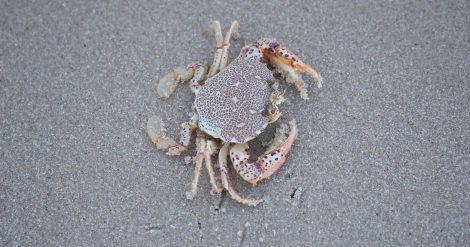
“This isn’t science!” Apparently that was a common refrain at the science bowl my son participated in last week. The event is normally held at the Carnegie Science Center, a typical modern hands-on institution heavy on technology like robotics and interactive computer exhibits and also physics demonstrations and experiments. This year the science bowl was at the Carnegie Museum of Natural History, the kind of scientific institution built a century ago to study and display fossils, field specimens of living organisms, geological samples, and cultural artifacts. In broad strokes, it represents the observational side of science rather than the experimental or constructive side. And apparently, that side is somewhat foreign to the middle schoolers of Pittsburgh’s North Hills.
As advertisements for the gig economy like to remind us (or perhaps persuade us), America is a land of doers. Time not spent making a widget or providing a service is time not earning money and so wasted. Objects in your home not doing anything productive for you are wasting space and should be sold. Of course, companies like Uber and eBay have a vested interest in encouraging us all to have a side hustle; their business models depend on a steady flow of transactional labor. At the same time, they have obviously found a receptive audience for their message. And I can’t exempt myself from that receptive audience, since I apparently feel the need to supplement my data science job with writing for this blog.
Little wonder then that a nation of doers pictures science as active and tangible. And so when we want to encourage our kids to be enthusiastic about science, technology, engineering and math (STEM), we gravitate towards activities like building robots and egg-drop protectors. And that’s all to the good, especially at younger ages when play is an essential component of learning. Plus, all kids will likely need some fluency with technology to be successful later on, even if they don’t have a career explicitly in a STEM field. It does mean though that an exercise like observing and comparing features of animals skulls is unfamiliar and doesn’t feel much like science to those kids.
Last week we looked briefly at the story of Mary Anning who helped create the field of paleontology as a hobbyist or citizen scientist. Inspired by her work, I mentioned the possibility of current citizen scientists contributing to our understanding of present biological diversity, just as Anning contributed to our understanding of past diversity and indeed our realization that the two were not the same. However, I neglected to provide specifics, so let me fix that now.

There is still a lot of observations to be made about biological diversity. Making those observations is labor-intensive, and requires the observer to go to where the biology is rather than the other way around. Scientists arrange field expeditions to do just that, but in many cases there are already people living or recreating where the biology is. Taking pictures of creatures in the world around you can contribute valuable data about what species live where. For example, Map of Life provides an app for documenting wildlife observations. And this paper on bees and flowers illustrates how such crowd-sourced data can be put to use. The paper is part of a whole special issue of Biological Conservation about the role citizen scientists have and can play in conservation activities and expanding our knowledge of taxonomy and diversity.
Maybe you are more of an inside kid, like me. There are still opportunities to contribute. Aforementioned natural history museums and other institutions already have vast collections of field specimens that have been accumulated but not necessarily observed. Digitizing those collections can make it easier to sort, sift and organize those collections and to make observations in a systematic way. WeDigBio has a list of digitization projects you can participate in.
Or maybe your idea of your neighborhood is a little broader. Citizen scientists can make observations about more than just biological diversity. There is also a diversity of astronomical objects to be explored, even within our own solar system. Backyard Worlds, for example, asks volunteers to study satellite images looking for moving objects that might be brown dwarfs or even the hypothesized Planet 9. Sky & Telescope maintains a list of other astronomy projects that can also benefit from your eyes, and some that don’t even need your active involvement, just the spare processing power of your computer. If that’s more your speed, other disciplines also have distributed computing projects you can participate in including the Great Internet Mersenne Prime Search that turned up the largest prime number known as we discussed earlier this month.
These are just a sampling of the scientific research projects that could benefit from relatively untrained observers contributing their time. They don’t require much to get started, and don’t require long commitments. If you are feeling more ambitious, there’s nothing stopping you from carrying on the tradition of amateur naturalists who made careful, repeated observations of the plants and animals that lived near them. Chances are, the area where you live is being changed by human activity and the plants and animals are having to adapt to chose changes. So there may be new things to learn even about species that might seem very familiar.
Whatever you choose, happy sciencing!
Just a reminder that next week will be our first post on When Science and Christianity Meet edited by David Lindberg and Ronald Numbers. I’ll share my thoughts on Chapter 1. There’s still time to track down a copy of the book and join in the online book club discussion.
Andy has worn many hats in his life. He knows this is a dreadfully clichéd notion, but since it is also literally true he uses it anyway. Among his current metaphorical hats: husband of one wife, father of two teenagers, reader of science fiction and science fact, enthusiast of contemporary symphonic music, and chief science officer. Previous metaphorical hats include: comp bio postdoc, molecular biology grad student, InterVarsity chapter president (that one came with a literal hat), music store clerk, house painter, and mosquito trapper. Among his more unique literal hats: British bobby, captain’s hats (of varying levels of authenticity) of several specific vessels, a deerstalker from 221B Baker St, and a railroad engineer’s cap. His monthly Science in Review is drawn from his weekly Science Corner posts — Wednesdays, 8am (Eastern) on the Emerging Scholars Network Blog. His book Faith across the Multiverse is available from Hendrickson.

Leave a Reply